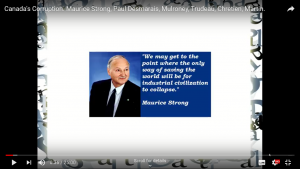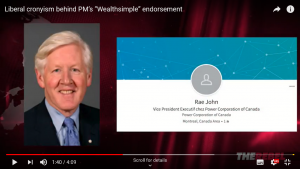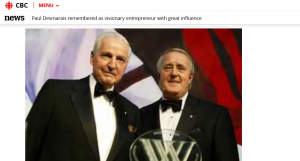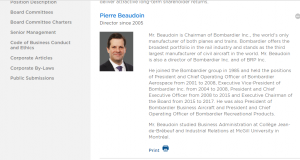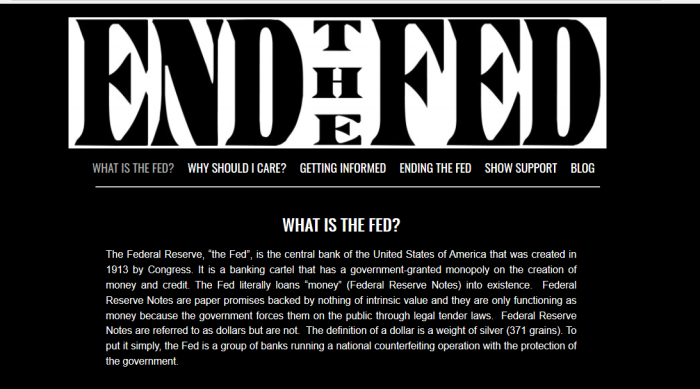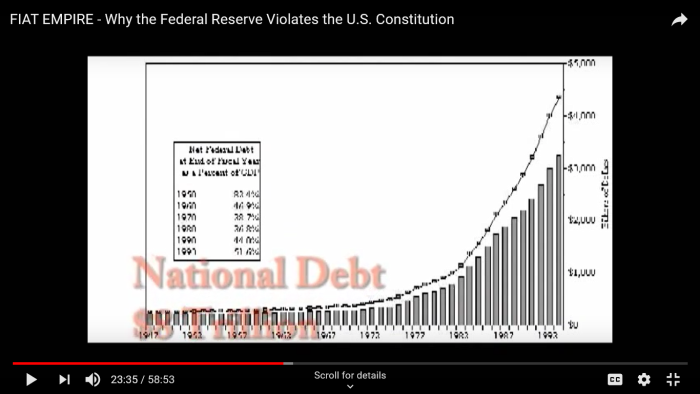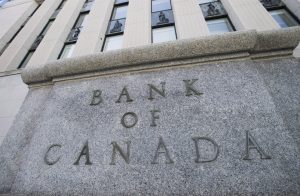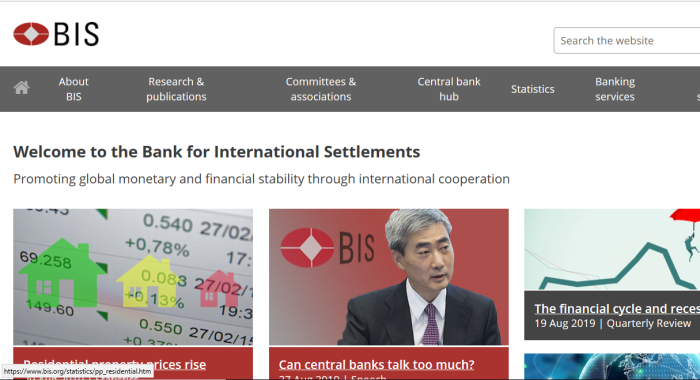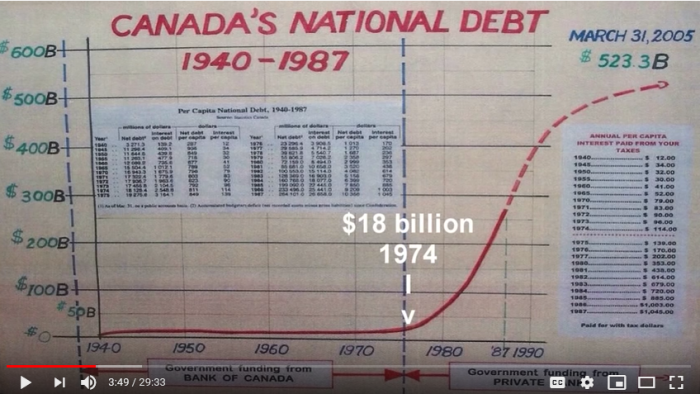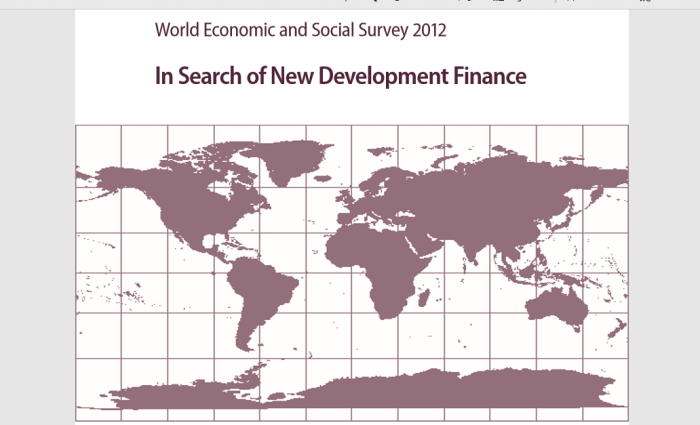Bev Collins, giving a talk on NAFTA

(Some of the litigation going on over NAFTA)
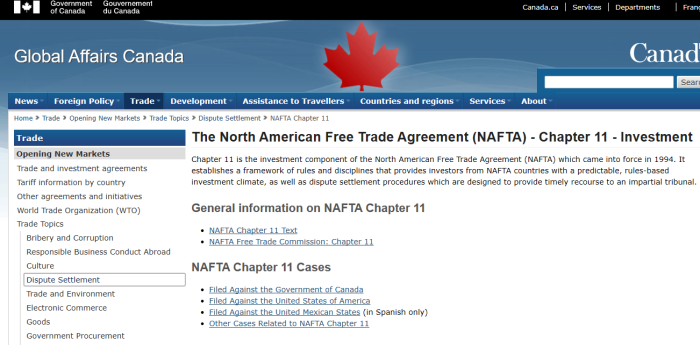
(Multilateral Agreement on Investment — MAI)
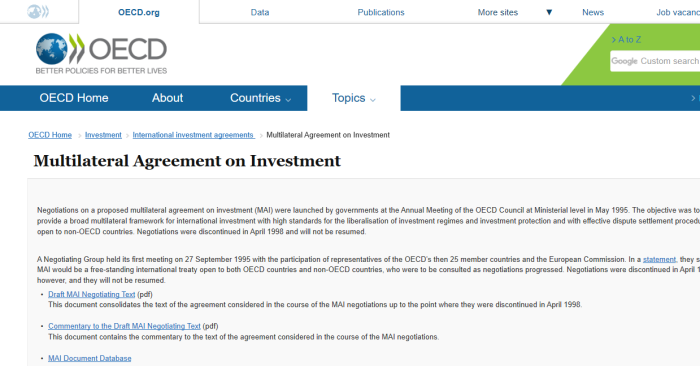
(Trilateral Commission)

(Tucker Carlson: Social Costs to Communities Most Important)
(A man who gets it, Lou Dobbs)
1. Offshoring, Globalization, Free Trade
The other posts on outsourcing/offshoring are available here. It focuses on the hidden costs and trade offs society as a whole has to make. Contrary to what many politicians and figures in the media claim, there are always costs to these kinds of agreement. These include: (a) job losses; (b) wages being driven down; (c) undercutting of local companies; (d) legal action by foreign entities; (e) industries being outsourced; and (f) losses to communities when major employers leave. Don’t believe the lies that these agreements are overwhelmingly beneficial to all.
2. Important Links
(1) https://www.wto.org/english/res_e/booksp_e/casestudies_e/case9_e.htm
(2) https://laws-lois.justice.gc.ca/eng/acts/w-11.8/index.html
(3) http://trilateral.org/download/doc/Vancouver_1996.pdf
(4) Vancouver_1996 Trilateral Commission
(5) https://ipolitics.ca/2019/04/30/investor-state-dispute-system-puts-strain-on-poorer-countries-report/
(6) https://www.international.gc.ca/trade-agreements-accords-commerciaux/topics-domaines/disp-diff/nafta.aspx?lang=eng
(7) https://www.international.gc.ca/trade-agreements-accords-commerciaux/topics-domaines/disp-diff/gov.aspx?lang=eng
(8) https://www.international.gc.ca/trade-agreements-accords-commerciaux/topics-domaines/disp-diff/ethyl.aspx?lang=eng
(9) https://www.international.gc.ca/trade-agreements-accords-commerciaux/topics-domaines/disp-diff/SDM.aspx?lang=eng
(10) https://www.international.gc.ca/trade-agreements-accords-commerciaux/topics-domaines/disp-diff/pope.aspx?lang=eng
(11) https://www.international.gc.ca/trade-agreements-accords-commerciaux/topics-domaines/disp-diff/parcel.aspx?lang=eng
(12) https://www.cbc.ca/news/canada/u-s-firm-sues-canada-for-10-5-billion-over-water-1.180821
(13) https://www.oecd.org/investment/internationalinvestmentagreements/multilateralagreementoninvestment.htm
(14) http://www1.oecd.org/daf/mai/pdf/ng/ng987r1e.pdf
(15) MAI Draft Agreement 1998
(16) https://blogs.imf.org
(17) http://trilateral.org/download/files/membership/TC_list_3_2019.pdf
(18) Trilateral Commission List 2019
(19) http://trilateral.org
(20) https://www.bloomberg.com/research/stocks/private/person.asp?personId=2158742&privcapId=3103423&previousCapId=6908053&previousTitle=Ontario%20Heritage%20Trust
(21) https://www.epi.org/publication/webfeatures_snapshots_archive_12102003/
(22) https://www.epi.org/publication/the-china-toll-deepens-growth-in-the-bilateral-trade-deficit-between-2001-and-2017-cost-3-4-million-u-s-jobs-with-losses-in-every-state-and-congressional-district/
3. Interesting Points From Bev Collins Video
-Semiconductor, aerospace, telecommunications industries were dismantled and sold off
-Mulroney gave QC special negotiating powers in event of succession
-Business Council on National Issues had $56M to market NAFTA
-600,000 jobs lost to free trade
-Small businesses gutted, corporations thrived
-92% of foreign investment came in to take over Canadian companies
-13,000 Canadian companies lost in meantime
-10,000 of those taken over by US transnationals
-1993 election, NAFTA huge issue, Mulroney/Campbell Gov’t wiped out
-Concern over water being sold off as commodity
-Liberals signed NAFTA “as is” in January 1994
-Roy MacLaren “both” Minister for International Trade and sat on the Trilateral Commission, a lobbying group.
-Canada push for a World Trade Body (Bill C-57)
-UN has 3 pillars:
Financial pillars (IMF)
World Bank
World Trade Organization
-Costs Canada $275M/annually to sit on committee
-IMF supposed to arrange short term loans to 3rd World
-World Bank set up for long term development funds
-Canada funded 3 Rivers Gorges Dam in China
-Export Development Corporation spends $40B, unaudited, unaccountable
-“Investor State Suit” Clause allows Trans-Nats
-Ethyl Corp sued Canada b/c of MMT gasoline additive ban
-SD Myers sued Canada over PCB ban
-Pope & Talbot sued over softwood lumber quota
-Much of Ontario manufacturing base lost
-Multilateral Agreement on Investment launched not long after NAFTA
-lawsuit against MAI, Judge Dube friends with PM Jean Chretien
-29 MAI delegates shut out of talks
-MAI eventually destroyed, but content moved over to Free Trade Area of the Americas
-Prelude to mass migration. If goods and money are borderless, then isn’t this the next logical step?
-Canada can find its wages driven down
-Unions themselves now seen as barrier to trade
-WTO ruled against airline subsidizes
-43,000 agricultural producers lost to bankruptcy
-Many SK farms bought up at huge discount
4. Canada’s Bill C-57
From the WTO page:
In 1994 the Canadian Parliament adopted legislation to implement the Uruguay Round with virtually no opposition. The measure was easily passed by the House of Commons with a vote of 185-7. There was general acceptance that the World Trade Organization (WTO) was a necessity for Canada both to participate and to compete in the new international order. Not only did legislators believe that the WTO Agreement would enhance and facilitate Canadian exports, but there also was an expectation among parliamentarians that the new rules-based dispute settlement mechanism would act as a counter-force to US unilateralism in the international arena. Roy McLaren, the Minister for International Trade, explained that the arrangements would particularly benefit ‘small and medium-size trade players like Canada, which are inherently vulnerable to the threat of unilateralism by the economic giants’
McLaren was wrong. This arrangement does not benefit small and medium trade players like Canada. In fact, it will weaken Canada immensely, and lead to job losses and erosion of our sovereignty. Jere a few quotes from the WTO Agreement Implementation Act.
Prohibition of private cause of action under Agreement
6 No person has any cause of action and no proceedings of any kind shall be taken, without the consent of the Attorney General of Canada, to enforce or determine any right or obligation that is claimed or arises solely under or by virtue of the Agreement.
This is a red flag. Nothing happens in Court unless the Attorney General of Canada signs off on it.
Non-application of Agreement to water
7 (1) For greater certainty, nothing in this Act or the Agreement, except the Canadian Schedule to the General Agreement on Tariffs and Trade 1994 set out in Annex 1A to the Agreement, applies to water.
This is promising though. Water was specifically excluded from NAFTA. Concerns were that once exports started, there would be no way to stop it.
Suspension of concessions to non-WTO Members
(2) The Governor in Council may, with respect to a country that is not a WTO Member, by order, do any one or more of the following:
(a) suspend rights or privileges granted by Canada to that country or to goods, service providers, suppliers, investors or investments of that country under any federal law;
(b) modify or suspend the application of any federal law with respect to that country or to goods, service providers, suppliers, investors or investments of that country;
(c) extend the application of any federal law to that country or to goods, service providers, suppliers, investors or investments of that country; and
(d) take any other measure that the Governor in Council considers necessary.
In short, this allows Canada to screw over non-WTO countries. Great way to force 3rd World nations in jumping on board. This is economic extortion.
5. Chapter 11, National Treatment Clause
This clause has been the basis of many lawsuits, since the text states that foreign companies must be treated the same as domestic companies.
Article 1102: National Treatment
1. Each Party shall accord to investors of another Party treatment no less favorable than that it accords, in like circumstances, to its own investors with respect to the establishment, acquisition, expansion, management, conduct, operation, and sale or other disposition of investments.
2. Each Party shall accord to investments of investors of another Party treatment no less favorable than that it accords, in like circumstances, to investments of its own investors with respect to the establishment, acquisition, expansion, management, conduct, operation, and sale or other disposition of investments.
3. The treatment accorded by a Party under paragraphs 1 and 2 means, with respect to a state or province, treatment no less favorable than the most favorable treatment accorded, in like circumstances, by that state or province to investors, and to investments of investors, of the Party of which it forms a part.
4. For greater certainty, no Party may:
(a) impose on an investor of another Party a requirement that a minimum level of equity in an enterprise in the territory of the Party be held by its nationals, other than nominal qualifying shares for directors or incorporators of corporations; or
(b) require an investor of another Party, by reason of its nationality, to sell or otherwise dispose of an investment in the territory of the Party.
And “who” has been suing Canada under Chapter 11 of NAFTA?
Cases filed against the Government of Canada
Ongoing arbitrations to which Canada is a party
- Clayton/Bilcon
- Lone Pine Resources Inc.
- Mobil Investments Canada Inc.
- Resolute Forest Products Inc.
- Tennant Energy, LLC.
- Westmoreland Coal Company
Concluded arbitrations to which Canada was a party
AbitibiBowater Inc.
Centurion Health Corporation
Chemtura Corp.
Detroit International Bridge Company
Dow AgroSciences LLC
Eli Lilly and Company
Ethyl Corporation
Mercer International Inc.
Merrill & Ring Forestry L.P.
Mesa Power Group LLC
Mobil Investments Inc. and Murphy Oil Corporation
Pope & Talbot Inc.
S.D. Myers Inc.
St. Marys VCNA, LLC
United Parcel Service of America, Inc. (UPS)
V. G. Gallo
Windstream Energy LLC
Withdrawn or inactive claims
- Contractual Obligation Productions, LLC, Charles Robert Underwood and Carl Paolino
- GL Farms LLC and Carl Adams
- J.M. Longyear
- William Jay Greiner and Malbaie River Outfitters Inc.
open access to information, about the various court proceedings. But do take a look. They almost all involve an alleged breach of the “National Treatment” Clause.
Now, this “only covers lawsuits against Canada. There have also been plenty of them against the US and Mexico for violating NAFTA.
6. Multilateral Agreement on Investment
2. Investment means:
Every kind of asset owned or controlled, directly or indirectly, by an investor, including: 1, 2
(i) an enterprise (being a legal person or any other entity constituted or organised under the applicable law of the Contracting Party, whether or not for profit, and whether private or government owned or controlled, and includes a corporation, trust, partnership, sole proprietorship, branch, joint venture, association or organisation);
(ii) shares, stocks or other forms of equity participation in an enterprise, and rights derived therefrom;
(iii) bonds, debentures, loans and other forms of debt, and rights derived therefrom;
(iv) rights under contracts, including turnkey, construction, management, production or revenue-sharing contracts;
(v) claims to money and claims to performance;
(vi) intellectual property rights;
(vii) rights conferred pursuant to law or contract such as concessions, licenses, authorisations, and permits;
(viii) any other tangible and intangible, movable and immovable property, and any related property rights, such as leases, mortgages, liens and pledges.
And remember that “National Treatment Clause”?
III. TREATMENT OF INVESTORS AND INVESTMENTS
NATIONAL TREATMENT AND MOST FAVOURED NATION TREATMENT
1. Each Contracting Party shall accord to investors of another Contracting Party and to their investments, treatment no less favourable than the treatment it accords [in like circumstances] to its own investors and their investments with respect to the establishment, acquisition, expansion, operation, management, maintenance, use, enjoyment and sale or other disposition of investments.
This would be the investment equivalent of NAFTA. All forms of investments would have to be given equal considerations. Although it was eventually stopped, the contents are still being considered for other opportunities.
7. Trilateral Commission
So, who founds the Trilateral Commission?
Where are they from?
Founding Members
David Rockefeller was the principal founder of the Trilateral Commission in mid-1973. He served on the executive committee and was North American chairman from mid-1977 through November 1991. He is now honorary chairman and a lifetime trustee of the Commission.
Zbigniew Brzezinski played an important role in the formation of the Commission and served as its first director from 1973 to 1976. After serving in the Carter administration, Dr. Brzezinski rejoined the Commission in 1981 and served on the executive committee until 2009.
Other early North Americans leaders were Gerard C. Smith, first North American chairman; Jean-Luc Pepin, who headed the Canadian Group; and George S. Franklin, regional secretary. Richard Cooper, Henry Owen, and Philip Tresize were members of the first political, monetary, and trade task forces to report to the Commission.
Max Kohnstamm of the Netherlands was the first European chairman and Wolfgang Hager the first regional secretary. Georges Berthoin of France, one of the first members from the European Community and a former European chairman, is now an honorary European chairman. Otto Graf Lambsdorff, another original European member and former European chairman, served as honorary European chairman until his death in 2009. François Duchène, Claudio Sergré, and Don Guido Colonna di Paliano were the European authors of the first task force reports.
If nothing else, it is refreshing to be honest about who is founding it. Now to get to the trickier question of why it was formed.
I. What is the Trilateral Commission? When and why was it formed?
The Trilateral Commission is a non-governmental, policy-oriented discussion group of about 390 distinguished citizens from Europe, North America, and Pacific Asia formed to encourage understanding and closer cooperation among these three regions on shared global problems.
The idea of the Commission was developed in the early 1970s. This was a time of considerable discord among the United States and its democratic industrialized allies in Western Europe, Japan, and Canada. There was also a sense that the international system was changing in some basic ways with rather uncertain implications. Change was most obvious in the international economy, as Western Europe and Japan gained strength and the position of the U.S. economy became less dominant. The increase in global interdependence was affecting the United States in ways to which it was not accustomed.
When they talk about closer cooperation and understanding, these are really code words for “globalism”. Eliminate borders to trade, to financial services, and eventually, to people moving.
This all sounds lovely, but it is incrementally erasing nations. Not an accident, and quite intentional.
8. Commission/Parliament Conflict of Interest
Bev Collins is absolutely right about conflict of interest going on in the Canadian Parliament. Here are two egregious examples:
Roy Maclaren, is a former Minister of International Trade (1996-2000). He was also sitting on the Trilateral Commission the entire time it seems.
Bill Graham is a former Minister of Foreign Affairs, and also a member of the Trilateral Commission.
Canada’s Minister of International Trade, and also Minister of Foreign Affairs were also sitting on a Commission that promotes ever growing free trade agreements?! How does that look? But that’s hardly the whole picture.
NORTH AMERICAN GROUP
.
Bertrand-Marc Allen, President, Boeing International, Arlington Graham Allison, Director, Belfer Center for Science and International Affairs, and Douglas Dillon Professor of Government, John F. Kennedy School of Government, Harvard University, Cambridge; former Dean, John F. Kennedy School of Government; former Special Advisor to the Secretary of Defense and former Assistant Secretary of Defense
Rona Ambrose, former MP, former Interim Leader, Conservative Party; former Minister on the Status of Women, Environment, Health and Public Works, Ottawa
Dominic Barton, Worldwide Managing Director, McKinsey & Company, London
*Catherine Bertini, Professor, Public Administration and International Affairs, Maxwell School of Citizenship and Public Affairs, Syracuse University; Distinguished Fellow, The Chicago Council on Global Affairs
Herminio Blanco Mendoza, Chairman, IQOM, Mexico City; former Mexican Secretary of Commerce and Industrial Development; former Chief NAFTA Negotiator
Michael Bloomberg, Founder and CEO, Bloomberg LP, NewYork; fomer Mayor of New York City
Esther Brimmer, Executive Director and CEO, NAFSA, Association for International Educators, Washington R.
Nicholas Burns, Professor of the Practice of Diplomacy and International Politics and Member of the Board, Belfer Center for Science and International Affairs, John F. Kennedy School of Government, Harvard University, Cambridge; former U.S. Under Secretary of State for Political Affairs
Jean Charest, Former Premier of Québec; former Deputy Prime Minister of Canada, Montréal
*Michael Chertoff, Chairman and Co-Founder, The Chertoff Group; former Secretary of Homeland Security; Former Judge, U.S. Circuit Court of Appeals for the Third Circuit; Former Assistant Attorney General, Criminal Division, Department of Justice, Washington
Raymond Chrétien, Partner and Strategic Advisor, Fasken Martineau DuMoulin LLP, Montreal, QC; Chairman of the Board of Directors of the Montréal Council on Foreign Relations (MCFR); former Associate Under Secretary of State of External Affairs; former Ambassador to the Congo, Belgium, Mexico, the United States, and France
Timothy Collins, CEO and Senior Managing Director, Ripplewood Holdings, Inc., New York
Richard N. Cooper, Maurits C. Boas Professor of International Economics, Harvard University, Cambridge; former Chairman, National Intelligence Council; former U.S. Under Secretary of State for Economic Affairs
Heidi Crebo-Rediker, CEO, International Capital Strategies, Washington; former Chief Economist, State Department
Lee Cullum, Contributing Columnist, Dallas Morning News; Radio and Television Commentator, Dallas Luis de la Calle, Managing Director and Founding Partner, De la Calle, Madrazo, Mancera, S.C. (CMM), Mexico City; former Undersecretary for International Trade Negotiations
Arthur A. DeFehr, CEO, Palliser Furniture Holdings Ltd., Winnipeg
André Desmarais, President and Co-Chief Executive Officer, Power Corporation of Canada, Montréal; Deputy Chairman, Power Financial Corporation
John M. Deutch, Institute Professor emeritus, Massachusetts Institute of Technology, Cambridge; former Director of Central Intelligence; former U.S. Deputy Secretary of Defense and Undersecretary of Energy
Paula J. Dobriansky, Senior Fellow, Belfer Center for Science and International Affairs, John F. Kennedy School of Government, Harvard University, Cambridge; Vice Chair, National Executive Committee, U.S. Water Partnership; former U.S. Under Secretary of State for Global Affairs
Wendy Dobson, Professor and Co-Director, Institute for International Business, Rotman School of Management, University of Toronto, Toronto; former Canadian Associate Deputy Minister of Finance
Gary Doer, former Canadian Ambassador to the United States, Winnipeg Thomas Donilon, Partner and Vice Chair, O’Melveny & Myers LLP, Washington; Non-resident Senior Fellow, Belfer Center for Science and International Affairs, Harvard University; former U.S. National Security Advisor
*Kenneth M. Duberstein, Chairman and Chief Executive Officer, The Duberstein Group, Washington; former Chief of Staff to President Ronald Reagan
Michael Duffy, former Executive Editor, TIME Magazine, Washington Douglas Elmendorf, Dean, John F. Kennedy School of Government, Harvard University, Cambridge Richard Falkenrath, Chief Security Officer, Bridgewater Associates, Westport Dawn Farrell, President and CEO, TransAlta Corporation, Calgary
Diana Farrell, Chief Executive Officer and President, JPMorgan Chase Institute, Washington; former Deputy Director, National Economic Council, and Deputy Assistant to the President for Economic Policy
Martin S. Feldstein, George F. Baker Professor of Economics, Harvard University, Cambridge; President Emeritus, National Bureau of Economic Research; former Chairman, Council of Economic Advisors
Linda Frum, Member, Senate of Canada, Ottawa Juan Gallardo, Chairman of the Board, Grupo Embotelladoras Unidas, SA de CV, Mexico City
*David R. Gergen, Professor of Public Service and Director of the Center for Public Leadership, John F. Kennedy School of Government, Harvard University, Cambridge; CNN Senior Political Analyst
Gordon Giffin, Partner, Dentons US LLP, Atlanta; former U.S. Ambassador to Canada
Donald Gogel, President and Chief Executive Officer, Clayton Dubilier and Rice, Inc., New York
Jamie S. Gorelick, Partner, WilmerHale, Washington; former Deputy Attorney General; former General Counsel, Department of Defense
Bill Graham Chancellor, Trinity College, University of Toronto; former Member, House of Commons; former Minister of Foreign Affairs and former Minister of Defense, Ottawa Donald Graham, Chairman and CEO of Graham Holdings Company, former owner of The Washington Post Company, Washington Peter Harder, Member, Senate of Canada, Ottawa
*Jane Harman, Director, President, and CEO, Woodrow Wilson International Center for Scholars, Washington; former Member, U.S. House of Representatives
Linda Hasenfratz, President and CEO, Linamar Corporation, Ontario
Carlos Heredia, Associate Professor, Department of International Studies, Center for Research and Teaching in Economics (CIDE), Mexico City; Coordinator, Program for the Study of the United States, CIDE
John B. Hess, Chairman of the Board and CEO, Hess Corporation, New York
*Carla A. Hills, Chairman and Chief Executive Officer, Hills & Company, Washington; former U.S. Trade Representative; former U.S. Secretary of Housing and Urban Development
*Karen Elliott House, writer, Princeton, NJ; Senior Fellow, Belfer Center for Science and International Affairs, John F. Kennedy School of Government, Harvard University; former Senior Vice President, Dow Jones & Company, and Publisher, The Wall Street Journal
Joseph K. Hurd, III, former Director, Emerging Business, Facebook, Menlo Park
David Ignatius, Columnist, The Washington Post, Washington Merit E. Janow, Dean of the Faculty and Professor of Practice, International Economic Law and International Affairs, Columbia University’s School of International and Public Affairs (SIPA), New York; former Member, Appellate Body from North America, World Trade Organization
P. Thomas Jenkins, Chair, Open Text, Waterloo; Chair, National Research Council of Canada
Lewis Kaden, Chairman, Markle Foundation Board of Directors; Former Vice Chairman, Citigroup, New York
Andy Karsner, Managing Partner of the Emerson Collective; Senior Strategist at X; former Assistant Secretary of Energy for Energy Efficiency and Renewable Energy
Juliette Kayyem, Lecturer in Public Policy, John F. Kennedy School of Government, Harvard University, Cambridge; Former Columnist, Boston Globe
Timothy Keating, Senior Vice President, Government Operations, The Boeing Company, Arlington
Colin Kenny, Member, Senate of Canada, Ottawa; former Special Assistant, Director of Operations, and Assistant Principal Secretary, to the Rt. Hon. P. E. Trudeau; Member, Special Senate Committee on Terrorism and Security, Special Joint Committee on Canadian Defence Policy; former Chair of Senate Standing Committee on National Security and Defence
Robert M. Kimmitt, Senior International Counsel, WilmerHale, Washington; former U.S. Deputy Secretary of the Treasury; former U.S. Under Secretary of State for Political Affairs; former U.S. Ambassador to Germany
Henry A. Kissinger, Chairman, Kissinger Associates, Inc., New York; former U.S. Secretary of State; former Assistant to the President for National Security Affairs; Lifetime Trustee, Trilateral Commission Nicholas Kristof, Columnist, The New York Times, Scarsdale Stephanie Kusie, Member of Parliament, House of Commons, Ottawa Fred Langhammer, Chairman, Global Affairs, The Estée Lauder Companies, Inc., New York
Hélène Laverdière, Member of Parliament, House of Commons, Ottawa *Monique Leroux, Chair of the Board of Investissement, Québec
Andrew Leslie, Member of Parliament, House of Commons, Ottawa
Marne Levine, former Chief Operating Officer, Instagram, Menlo Park Santiago Levy, Vice President for Sectors and Knowledge, Inter-American Development Bank, Washington David Lipton, First Deputy Managing Director, International Monetary Fund, Washington
Linda Koch Lorimer, CEO, Abundantior; former Vice President for Global & Strategic Initiatives, Yale University
*John Manley, Chair CIBC, CIBC Bank USA, and Chair CAE Inc.
Judith A. McHale, President and Chief Executive Officer, Cane Investments, LLC, Hastings on Hudson; former U.S. Under Secretary of State for Public Diplomacy and Public Affairs; former President and Chief Executive Officer, Discovery Communications
Thomas F. McLarty, III, President, McLarty Asssociates, Washington; former Chief of Staff to President Clinton
Lourdes Melgar, Energy Scholar, MIT Center for International Studies, Mexico City
Jami Miscik, President and Vice Chairman, Kissinger Associates, Inc., New York; former Deputy Director for Intelligence, Central Intelligence Agency Andrea Mitchell, Chief Foreign Affairs Correspondent, NBC News, Washington
Adm. Michael Mullen (Ret.), CEO, MGM Consulting, Annapolis; former Chairman of the Joint Chiefs of Staff Heather Munroe-Blum, Chair of the Board, Canada Pension Investment Fund; Principal Emerita and Professor, Faculty of Medicine, McGill University, Toronto
Lori Esposito Murray, Distinguished Chair for National Security, U.S. Naval Academy; former President & Chief Executive Officer, World Affairs Councils of America; former Special Advisor to the President on the Chemical Weapons Convention; former Assistant Director, U.S. Arms Control & Disarmament Agency
John D. Negroponte, Vice Chairman, McLarty Associates, Washington; former Deputy Secretary of State; former Director of National Intelligence; former Ambassador to the United Nations, Honduras, Mexico, the Philippines and Iraq
*Joseph S. Nye, Jr., University Distinguished Service Professor and former Dean, John F. Kennedy School of Government, Harvard University, Cambridge; former Chair, National Intelligence Council; former U.S. Assistant Secretary of Defense for International Security Affairs; former North American Chairman, Trilateral Commission
*Meghan L. O’Sullivan, Evron and Jeane Kirkpatrick Professor of the Practice of International Affairs, John F. Kennedy School of Government, Harvard University, Cambridge; former Special Assistant to President and Deputy National Security Advisor for Iraq and Afghanistan; North American Chairman, Trilateral Commission Thomas R. Pickering, Vice Chair, Hills & Company, Washington; former Under Secretary of State for Political Affairs; former U.S. Ambassador to the Russian Federation, India, Israel, El Salvador, Nigeria, Jordan, and the United Nations; former Senior Vice President, International Relations, Boeing Company
John A. Quelch, Vice Provost for Education and Dean, School of Business Administration, University of Miami, Miami
John Risley, Chairman and President, Clearwater, Bedford
Andrés Rozental, former Mexican Deputy Foreign Minister; Nonresident Senior Fellow, Foreign Policy, Latin America Initiative, Brookings Institution, Mexico City
David M. Rubenstein, Co-founder and Managing Director, The Carlyle Group, Washington
*Luis Rubio, President, Mexican Council on Foreign Relations; Chairman, Center for Research Development (CIDAC), Mexico City Indira Samarasekera, Senior Advisor, Bennett Jones LLP, Vancouver
David Sanger, Chief Washington Correspondent, The New York Times, Adjunct Lecturer in Public Policy, Harvard University, Cambridge Eric Schmidt, Technical Advisor and Board Member, Alphabet Inc., Mountain View
Susan Schwab, Professor, Maryland School of Public Policy, University of Maryland, College Park; former U.S. Trade Representative Gerald Seib, Executive Washington Editor, The Wall Street Journal, Washington Jaime Serra, Chairman, SAI Law and Economics; Founder, Aklara, the Arbitration Center of Mexico, and the NAFTA Fund of Mexico, Mexico City; Deputy Chairman, North American Trilateral Commission
Rajiv Shah, President, Rockefeller Foundation; Distinguished Fellow in Residence, Edward A. Walsh School of Foreign Service, Georgetown University, Washington; former Administrator, U.S. Agency for International Development
Wendy Sherman, Senior Advisor, Albright Stonebridge Group; Resident Fellow, Harvard Kennedy School Institute of Politics; former Under Secretary of State for Political Affairs Jeffrey Simpson, Senior Fellow, Graduate School of Public and International Affairs, University of Ottawa; former National Affairs Columnist, The Globe and Mail, Senior Fellow, University of Ottawa, Ottawa
Olympia Snowe, Former U.S. Senator; Senior Fellow, Bipartisan Policy Center, Portland
Cecilia Soto Gonzalez, Federal Congresswoman, Mexico City Nancy Southern, President and Chief Executive Officer, ATCO Ltd. and Canadian Utilities Limited, Calgary
*James B. Steinberg, former Dean, Maxwell School, and University Professor of Social Science, International Affairs and Law, Syracuse University, Syracuse; former Deputy Secretary of State, former Deputy National Security Advisor *Carole Taylor, Chancellor Emeritus, Simon Fraser University, Vancouver; former Minister of Finance, British Columbia; former Chair, CBC/Radio-Canada; former Chair, Canada Ports; public affairs broadcaster
Luis Téllez Kuenzler, Special Advisor, KKR, President, NTT Everis; former Chairman of the Board, Mexican Stock Exchange, Mexico City; former Secretary of Communications and Transportation of Mexico
G. Richard Thoman, Managing Partner, Corporate Perspectives, New York; Adjunct Professor of International Business, Columbia University; Professor of Practice in International Business, the Fletcher School, Tufts University; former President and Chief Executive Officer, Xerox Corporation; former Senior Vice President and Chief Financial Officer, IBM Corporation
*Frances Townsend, Senior Vice President, Worldwide Government, Legal and Business Affairs, MacAndrews & Forbes Inc., New York; former Assistant to the President for Homeland Security
Melanne Verveer, Executive Director, Georgetown Institute for Women, Peace and Security, Georgetown University, Washington Guillermo F. Vogel, Director and Vice President of the Board, Tenaris, Mexico City
*Paul A. Volcker, former Chairman, President’s Economic Recovery Advisory Board; former Chairman, Wolfensohn & Co., Inc., New York;
Frederick H. Schultz Professor Emeritus, International Economic Policy, Princeton University; former Chairman, Board of Governors, U.S. Federal Reserve System; Honorary North American Chairman and former North American Chairman, Trilateral Commission
Yuen Pau Woo, Member of Parliament, House of Commons, Ottawa
Robert Zoellick, Chairman, Alliance Bernstein, New York; former President, The World Bank Daniel Yergin, Vice Chairman, IHS, Cambridge
Any more names look familiar?
9. NAFTA Resulted In Job Losses
This Economic Policy Institute study estimates job losses from NAFTA. Almost 900,000
This EPI study estimates job losses from trade with China. Note, it is not even “free” trade, just “liberalized” trade. An estimated 3.4 million jobs.
And another study on job losses, due to NAFTA.
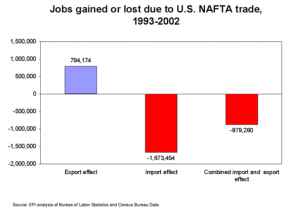
And no, job losses are not just an American problem. According to Statistics Canada, there were some very alarming trends across the developed world.
Shrinking employment in manufacturing is a common trend in almost all OECD countries. From 1998 to 2008, the United States lost close to one-quarter (4.1 million) of its manufacturing jobs. Elsewhere in the OECD, from 1990 to 2003, manufacturing employment fell by 29% in the United Kingdom, 24% in Japan, 20% in Belgium and Sweden and 14% in France.
Canada’s manufacturing industry lost 278,000 jobs (1 in 6) from 2000 to 2007, which reduced the sector’s share of total employment from 16% to 12%. That share then declined to 10% in 2009 after the 2008–2009 recession when manufacturers faced weaker demand and cuts to industrial capacity, resulting in the loss of 188,000 jobs. Regions where employment is highly concentrated in the manufacturing sector—mainly in Quebec and Ontario—experienced the greatest manufacturing job losses. From 2000 to 2007, Canadian manufacturing workers aged 20 to 29 in these regions were the most affected by the employment decline in this sector, as they were up to twice as likely to experience a loss of income as those holding a comparable job in a region with a low concentration of manufacturing.
In addition, job security deteriorated in regions of high manufacturing concentration in 2007, leaving workers at greater risk of unemployment and more likely to be receiving Employment Insurance (EI) benefits. Manufacturing workers in these regions were 39% more likely to receive EI benefits than their counterparts in regions with a low concentration of manufacturing.
Why have all these nations taken huge job losses, especially in manufacturing? Could be because “free trade” allows companies to shop around for cheaper labour costs.
When 2 nations are very similar in their employment laws and standards, this can theoretically work. But the problem is that these deals create a “race to the bottom”, where cost cutting and the bottom line are the only considerations.
10. Free Trade Has Real Costs
A quick primer is this Lou Dobbs video.
These deals give foreign companies rights to marketplaces and workforces that domestic companies do. This may sound great, but the reality is the undercutting domestic producers can put lots of people out of work.
As demonstrated by Chapter 11 of NAFTA, there is a lot potential for new litigation for companies not getting the results or the market share they want. Who pays for it? Taxpayers.
Politicians like Roy Maclaren or Bill Graham can also sit on corporate boards, while still claiming to advocate for the Canadian public. And these conflict-of-interests are hardly limited to Canada. It raises valid questions about who they really work for. Furthermore, for the Liberals to campaign on amending NAFTA (then scrap the promise), makes people wonder if they ever intended to keep the promise.
The well being of communities doesn’t get emphasized enough. Large employers essentially provide for many families, and help keep things stable. If it suddenly becomes advantageous to pack up and leave, then a lot of people get screwed over.
Is this a rejection of business or capitalism? No. However, there are other things to consider than simply profits and GDP.
Like this:
Like Loading...
